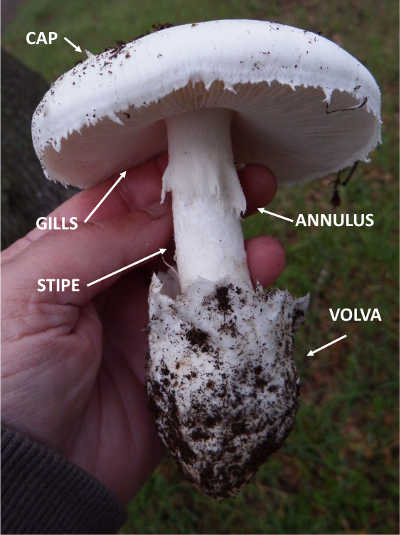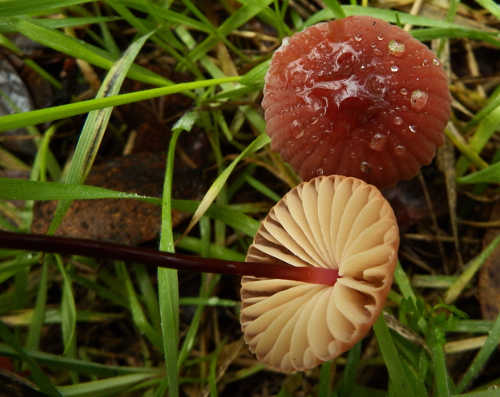
NORTHERN CALIFORNIA – There are loads of mushrooms popping up all over the Berryessa Snow Mountain National Monument region right now, and learning how to properly identify them can be somewhat tricky.
There’s an old joke that goes something like: trying to identify a mushroom by its cap alone is like trying to identify a bald man by just looking at the top of his head. You need a lot more information to make a correct ID.
The color, size and shape of the cap are fair indicators of what kind of mushroom you’ve found. The cap of a common big laughing gymn (smooth and about the size of a dinner plate) is very different from that of a morel (ridged and pitted).
But because a lot of mushrooms mimic one another – and many of them are toxic – “fair indicators” aren’t really enough. You also need to look at the stipe (the stem of the mushroom), the gills (if it has them), and at its spore print.
The construction, length and color of the stipe of a mushroom will all help you get closer to a proper identification. Is the stipe long or short?
Some mushrooms like the common red threads (Marasmius plicatulus) have a very long stipe compared to the size of the cap.
What does the stipe feel like? That of the inky cap mushroom (Coprinopsis atramentaria), is fragile and may fall apart between your fingers, while that of the big laughing gymn (Gymnopilus junonius) feels almost woody.
Whether or not there’s an annulus attached to the stipe below the cap will also give you more information. The annulus is that ring or collar you’ll find on the stipe of some mushrooms. It’s actually the remnant of a veil that covered the gills when the mushroom was younger.
You’ll also find that some mushrooms actually have two veils: one that covers the gills and one that covers the whole mushroom while it’s in the ground, also called a volva or universal veil.
On mushrooms like the Inky Cap, remnants of the universal veil can be seen as soft white flecks on the cap; whereas in specimens like the highly toxic Destroying Angel (Amanita ocreata) remnants can be found on the cap and the stipe.
Now, look under the cap. Does the mushroom have gills or does it have pores?
The gills (lamella) are those thin ridges radiating out from the center of the like the spokes on a bicycle wheel. This is where spore production takes place.
The color of the gills and how they are arranged will tell you more about the kind of mushroom you have. The gills of the inky cap, for example, are black and rather “crowded,” whereas the gills of the red thread are cream colored and look “distant” from one another.

If you’re holding something that looks like a gilled mushroom but doesn’t actually have gills under the cap, you’ve probably got a bolete of some kind.
Bolete mushrooms have what look like open pores on the underside of the cap. Each of those pore-looking things is actually the open end of a tubule, and it’s inside these tubes that these mushrooms generate their spores.
Along with the information you’ve gathered about the cap, stipe and gills of the mushroom, checking for the color of its spores will also help identify it. The spores of the big laughing gymns are rust-orange, those of the inky cap are black and those of the red threads are white.
To collect a spore print, remove the stipe from the cap and place the cap gills-down on a piece of newspaper in a warm dry place and leave it overnight. The next morning, you’ll be able to see the spores on the paper.
So you see, there’s a lot more to properly identifying mushrooms than simply looking at the cap. For safety’s sake, gather as much information as you can before adding those lovely wild mushrooms you found to your entrée at dinner.
Tuleyome is a501(c)(3) nonprofit conservation organization based in Woodland, Calif. For more information, visit www.tuleyome.org . Mary K . Hanson is a Certified California Naturalist and author of the blog, The Chubby Woman’s Walkabout. For more information on fungi in the Berryessa Snow Mountain Region see “A Species Guide to the Berryessa Snow Mountain Region” available online at www.Lulu.com .


 How to resolve AdBlock issue?
How to resolve AdBlock issue? 



